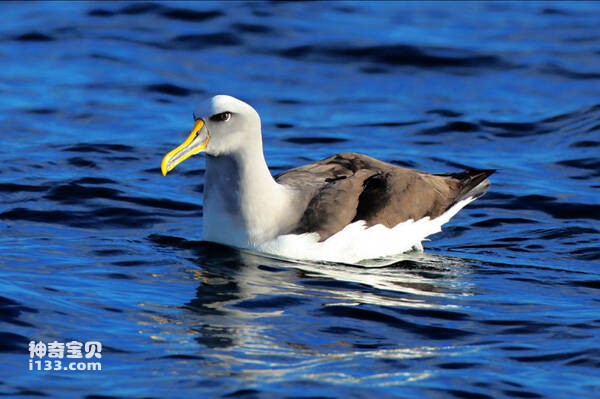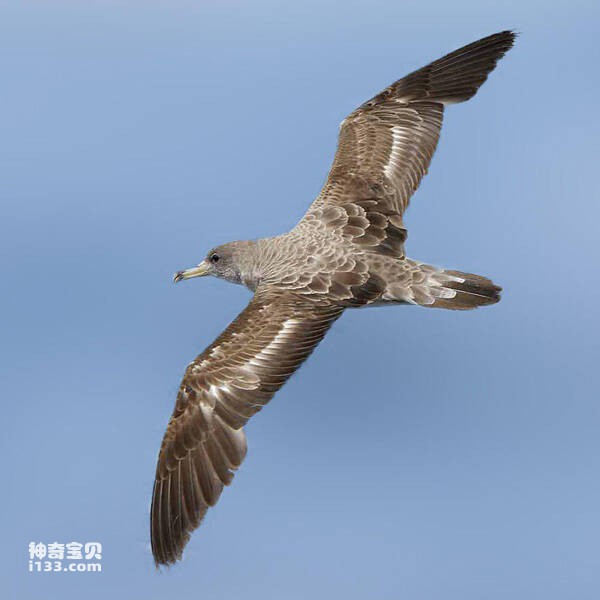Calonectris diomedea
IUCN
LCBasic Information
Scientific classification
- name:Calonectris diomedea
- Scientific Name:Calonectris diomedea,Scopoli's Shearwater
- Outline:Waterfowl
- Family:
Vital signs
- length:45-48CM
- Weight:700-800g
- lifetime:40-60 years
Feature
It is the largest seabird in the Atlantic Ocean and the only species that can be observed flying high and can soar in heat currents
Distribution and Habitat
Resident Bird: Albania, Algeria, Angola, Benin, Bosnia and Herzegovina, Cape Verde, Cameroon, Democratic Republic of the Congo (DRC), Congo (Brazzaville), Croatia, Cyprus, Cote d 'Ivoire, Egypt, Equatorial Guinea, France, Gabon, Gambia, Ghana, Gibraltar, Greece, Guinea, Guinea-Bissau, Israel, Italy, Lebanon, Liberia, Libya, Mali He, Mauritania, Monaco, Morocco, Namibia, Nigeria, Palestine, Portugal, Saint Helena, Ascension and Tristan da Cunha, SAO Tome and Principe, Senegal, Sierra Leone, Slovenia, South Africa, Spain (Canary Islands), Syria, Togo, Tunisia, Turkey and Western Sahara.
Wandering (non-breeding grounds) : Oman. Wandering (Traveller) : Iran. Wandering: Austria, Bulgaria, Montenegro and Serbia.
Existence and origin uncertain: Belgium, Czech Republic, Denmark, Faroe Islands, Germany, Ireland, Netherlands, Norway, Poland, Sweden, Switzerland and United Kingdom.
Mighty shearwaters are pelagic Marine birds, easily distinguishing between frequent foraging trips and
Appearance
The Mighty Shearwater is a large ocean-going seabird. The sexes are similar in appearance, but the male is slightly larger than the female on average. The body length is 45-48 cm, the wingspan is 100-125 cm, and the weight is 700-800 g. The upper body is brownish gray, and most of the plumage is light brown. The abdomen is white or slightly gray. The wings are dark brown with brown edges, most prominent at the trailing edge of the wings. The tail is dark brown, and the anterior tail cover is white. The beak is large and hook-like, with a yellowish upper part and a black patch near the tip. The legs and feet were pale flesh.
Details
Mighty Shearwater (Calonectris diomedea) Scopoli' s Shearwater, no subspecies.

In addition to being the largest seabird in the Atlantic Ocean, the mighty Shearwater is the only species that can be observed flying high and can soar in heat currents. It is easy to distinguish it from other seabirds by a very typical type of flight, as they usually produce an arc of flight between their wingtips, unlike other birds that fly with aligned wingtips. In addition to the position of the wings, the flight profile is also very characteristic, long glides will scrape the crest, the wings are always inclined and slightly tilted back. The beat is slow and the wings are noticeably flexible. They usually fly upwind, alternately climbing a few meters above the waves, accompanied by low flying. When they rest, they form large flocks (therafts) in which the birds are in constant motion, but the mighty shearwaters dominate, their heads turned to the windblown side.
They feed on small fish and pelagic cephalopods, and can occasionally act as scavengers, eating the remains of large fish, whales, or other floating animals. In the sea, they have social behavior, forming large groups called rafts because they float in dense patches. Hunting in groups, able to dive deep to find prey, up to 15 meters deep. Although the species does not call at sea, the breeding colony is noisy at dusk, and the adult individuals make harsh calls, which are distinguished by sex.

Mighty shearwaters usually stay in the open ocean, but come ashore to breed. Monogamous, nesting on coastal cliffs and islets, digging rough burrows and placing a single white egg in them. Raised by both parents, the parent bird regurgitates the protein paste directly into the chick's beak. The chicks hatch from the nest in the fall and can immediately leave the sea, where they stay for 7-10 years until they reach sexual maturity and return to their place of origin to nest.
The most recent estimate of the European population in 2015 was 30,500-48,100 pairs, equivalent to 61,000-96,000 pairs of mature individuals. The largest population on Zembra Island in Tunisia is estimated to be 113,720-176,750 pairs (Defos du Rau et al., 2012). The global population is estimated at 142,478-222,886 pairs (Carboneras et al. 2013), which is assumed here to correspond to approximately 285,000-446,000 mature individuals.
Listed on the IUCN Red List of Threatened Species (IUCN)2018 ver3.1 - Not Threatened (LC).
Protect wild animals and eliminate wild meat.
Maintaining ecological balance is everyone's responsibility!








